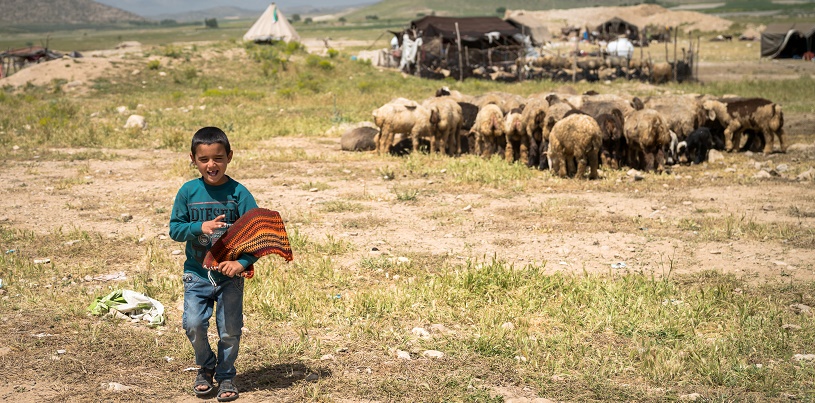
Nomads of Iran & Iranian Tribes
Away from the hustle and bustle of modern life, Iran Nomads live a life of simplicity and migration in the arms of Mother Nature! Like their fathers, these nomads have been living under black tents, surviving through their herds, sleeping under the stars, and traveling in search of green pastures and gentle weather. This rare lifestyle- a gorgeous balance between people, animals, and nature- has blessed them with charms that you shouldn’t miss. Especially since the number of these nomads is becoming less year by year. Stay with me to find out more about the Nomads of Iran, their culture, their various tribes, and practical tips to join a Nomadic Tour.
Contents
- 1 Why Visit the Nomads of Iran
- 2 The Story of Iran Nomads
- 3 The Sweet Lifestyle of Iran Nomads
- 4 Nomadic Clothing: A Treat for the Eyes
- 5 Nomadic Lifestyle in Iran: Partying the Nomadic Style
- 6 The Most Famous Nomadic Tribes in Iran
- 7 Nomads of Iran – The Bakhtiari Tribe
- 8 Nomads of Iran – The Qashqai Tribe
- 9 Iranian Nomads – The Afshar
- 10 Nomads of Iran – The Shahsavan
- 11 Nomads of Iran – Kurdish Nomads
- 12 Iran Nomads – Baseri Nomads
- 13 When, Where, and How to See the Nomads of Iran
- 14 The Iranian Nomads are Gradually Fading Away
- 15 Iranian Nomad Tours
Why Visit the Nomads of Iran
Spending time with Iran Nomads is like nothing you’ve experienced before. The least the taste of Iranian nomads’ simple lifestyle and sweet hospitality do to you is to stay with you forever. Spending nights in a simple Siahchador (black tent), waking up to nature, milking sheep, making bread, collecting wood, churning mashk, and spinning wool is just part of the unique stayover. The close contact with these genuine Iran nomads, losing your modern self in their primitive lifestyle, blending in with their sweet culture, dressing up like them, and watching how tirelessly they overcome the challenges of living independently in nature just make your heart melt. You might even be lucky enough to witness the birth of a new lamb or accompany the nomads in their seasonal adventure: kooch. Nowhere else can you find the taste of the fresh milk, homemade yogurt and cheese, and fresh-baked bread the nomads offer you! Plus, visiting the nomads of Iran is a tremendous help to the survival of their rare lifestyle.
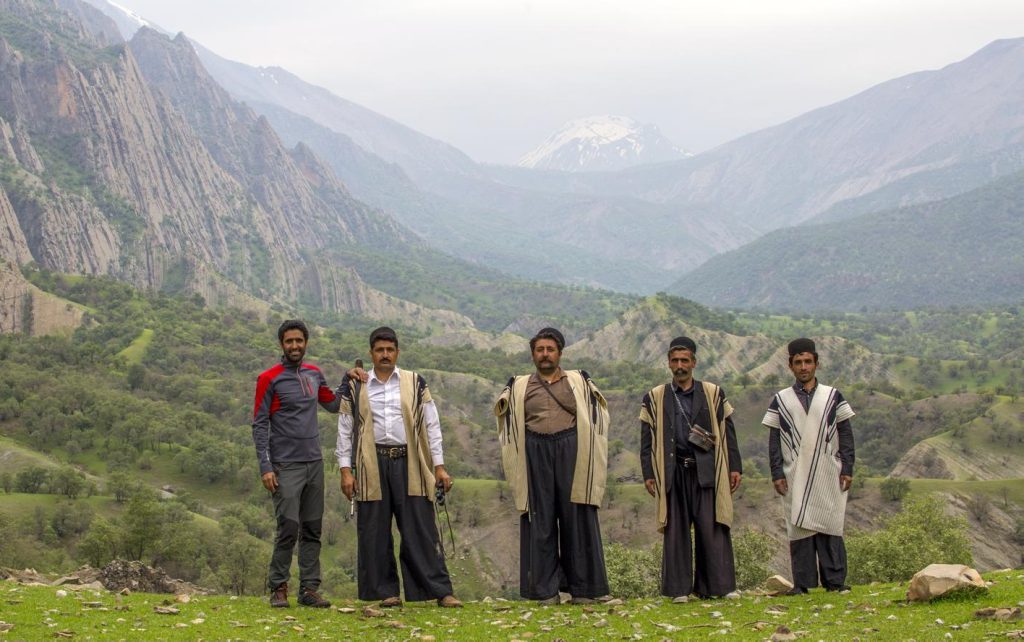
Bakhtiari Nomads of Iran @Irangard
The Story of Iran Nomads
The story of the nomads of Iran goes back to the second millennium B.C., the arrival of Aryans in the Iranian plateau. Some of these people decided to stay in a nice place and start farming for their food. But some preferred to stick with their nomadic lifestyle, always traveling with their flocks of goats and sheep to avoid the harsh winters and scorching summers. Gradually, large cities were born and technology changed the world, but some of these Iranian nomads kept on roaming deserts, hillsides, and plains with all their belongings. What’s more fascinating is that the nomads of Iran have had profound impacts on Iranian history. They have been soldiers in the army, protected the borders, and have had descendants that founded the greatest Persian empires: the Medes and the Achaemenid!
Today, a small population of 19 different nomadic tribes still hang on to their ancestors’ wild and free spirit. Even with this small remaining population, together with some other Asian countries like Kyrgyzstan and Mongolia, Iran has one of the world’s largest community of nomads. Though modern life has made changes to some aspects of their life, the nomad’s rare lifestyle, customs, hospitality, and generosity haven’t stopped to charm us!
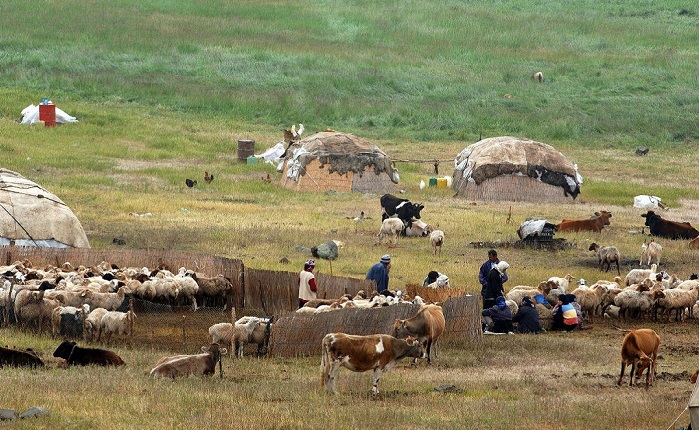
The Sweet Lifestyle of Iran Nomads
Nomadic lifestyle in Iran is a charming harmony of people, nature, animals, and migration. With their animals as their main means of survival and source of income, the nomads of Iran travel twice a year. The total life of each tribe is in harmony with its surrounding climate. For each tribe, seasonal migration (that is known as Kooch) is to specific locations and through specific routes. In spring, they head for cooler pastures (Yeylaq) where grass will be available for their flocks during the dry seasons. With the first breezes of cold, they return to warmer pastures (Qeshlaq) to spend the cold seasons. It is nothing but the great teamwork of all the members of a family that make this kind of life possible.
The nomads of Iran work tirelessly and are independent. They wake up at sunrise. Men head off with their herd (though women are in charge of the animals too). And women stay in the tent to do their daily work. They make dairy products and unique wool handicrafts. The wool carpets that nomad women weave are just precious. These carpets feature unique patterns nomad women have been using for centuries. In the towns and cities nearby, they trade their products for the things they are unable to produce.

Nomadic Clothing: A Treat for the Eyes
Nomads’ clothes are definitely one of the things that makes them so special! Men’s clothing differs from tribe to tribe. But mostly, there are loose pants, a hat, and a long coat or vest that is fastened by a shawl on the waist. The coat or vest is traditionally made with natural fibers and features special Iranian nomadic patterns in its texture. On the other hand, no matter what tribe they are from, Iran nomad women enjoy puffy and multilayered skirts. They also feature colors and glitter in their clothing. This lovely dress code becomes even more cheerful in weddings. Today, it is mostly the elder generation and women who still wear their traditional clothes.
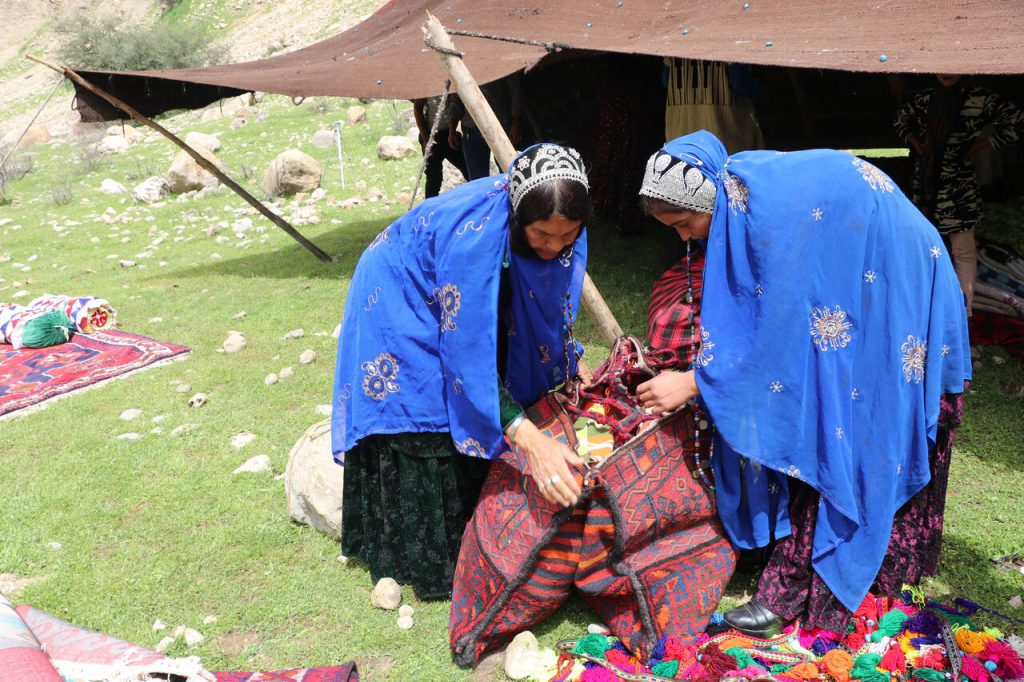
Nomads in Iran: Nomad Women in Traditional Tribe Clothing
Nomadic Lifestyle in Iran: Partying the Nomadic Style
You can find delights in every aspect of Iran nomadic life. But, what you shouldn’t miss is taking part in a nomadic wedding ceremony. Traditionally, a wedding takes days! Colorful clothes, marriage rituals, traditional music, happy dances, funny battle shows, and finger-licking food make a nomadic wedding like no other party you have ever been to.
Nomads have henna ceremonies before the wedding. After putting henna on the bride’s hands and feet, they put makeup on her and clad her in special clothes. They decorate a back tent with carpets and colorful wool and prepare another bridal chamber. Then guests start arriving with sugar, rice, cash, and sheep as gifts. With special music, the guests accompany the bride, who’s riding on a horse. Her dowry is also carried behind her. As they hand her to the groom, the dancing starts. Nomads dance with colorful handkerchiefs.
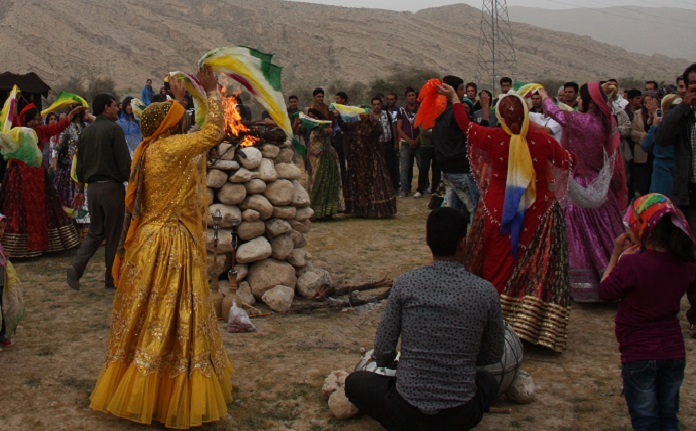
The Most Famous Nomadic Tribes in Iran
The nomadic tribes of Iran are as diverse as the Persian culture itself. From the green borders of the north to the warm waters of the Persian Gulf, these Iranian Nomadic tribes are scattered around the country. Turkic and Kurdish tribes dominate the north and the northwest. Turkmen nomads live in the northeast. Baluch nomads are found in the east and southeast. Kurdish, Arab, Lur, and Turkic tribes all roam western, central, and southwestern Iran. Here are some of Iran’s most famous nomadic tribes: the Bakhtiari, the Qashqai, the Afshar, the Shahsavan, Kurdish Nomads, and Baseri Nomads.
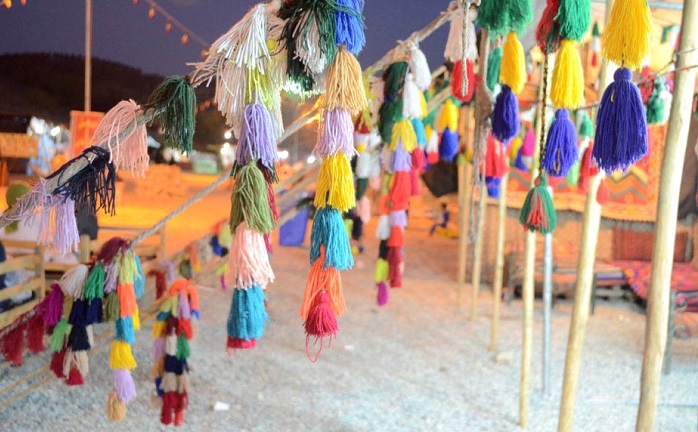
Nomads of Iran – The Bakhtiari Tribe
Bakhtiari people are migrants of the Zagros Mountains hillsides. They are excellent artists and masters of creating UNESCO-acclaimed handicrafts. They speak a Luri dialect of Persian (and Arabic in Khuzestan), but they also have fluency in official Persian. The highlands of Zagros Mountains are their summer home. At different times around the year, you can find them in Chahar Mahal and Bakhtiari, Lorestan, Khuzestan, and Isfahan Provinces. These “Iranian lions” are descendants of Fereydun, a legendary hero from Persian epic. Men wear mustaches, a black and white coat, a black hat, and very loose pants. Women’s colorful clothes are embroidered with beads.
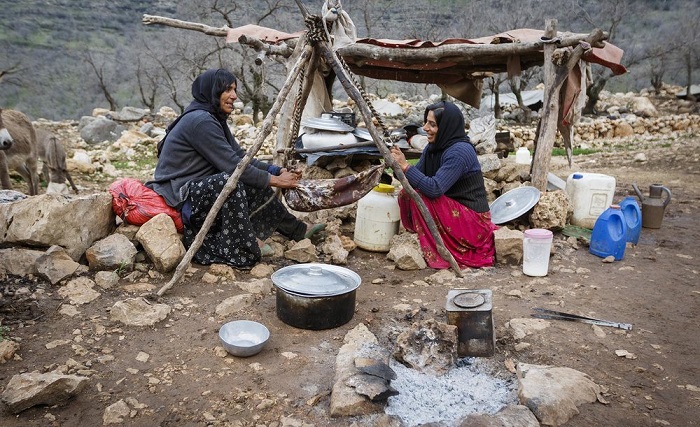
Nomads of Iran – The Qashqai Tribe
As the second biggest tribe in Iran, these Turkic people originate from the northwest of Iran. But they gradually made the Zagros Mountains their home. The Qashqai tribe has had profound influences on Iranian history. They speak a Turkic dialect, but are also fluent in Persian. The beautiful rugs Qashqai women weave are very popular for their rich and deep colors. They are probably the most famous of all Persian tribal weavings. At different times during the year, you can find them in Fars (especially north of Shiraz), Khuzestan, Kohgiluyeh and Boyer-Ahmad, Bushehr, and Isfahan Provinces. These Iranian nomads mostly move between summer pastures on Zagros highlands and winter pastures near the Persian Gulf. The key icon for a Qashqai man is a felt cap that looks like a tulip. They also wear wide-legged pants and a long silk coat with a special pattern. Also, they wrap a shawl around their waist. Qashqai women wear decorated long tunics, with layers of skirts underneath.
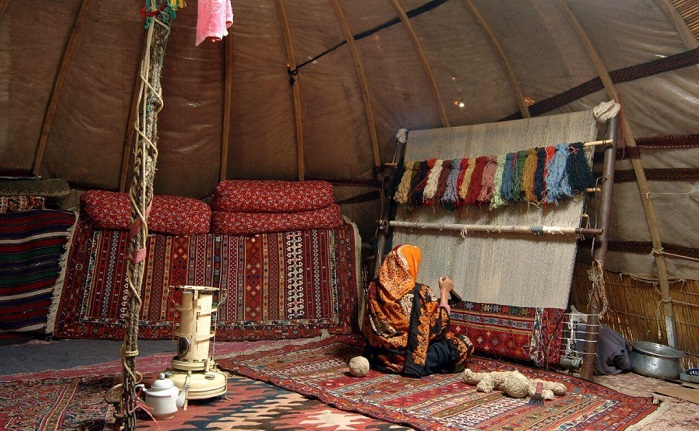
Iranian Nomads – The Afshar
These pastoral nomads arrived in Iran in the 11th and 13th centuries. They have the foothills of Mount Sabalan (Azerbaijan and Hamedan) as their summer home and the warm plains of Moghan (near the Caspian Sea) as their winter home. You can also find some Afshar nomads roaming between Kerman and Bandar Abbas in southern Iran.
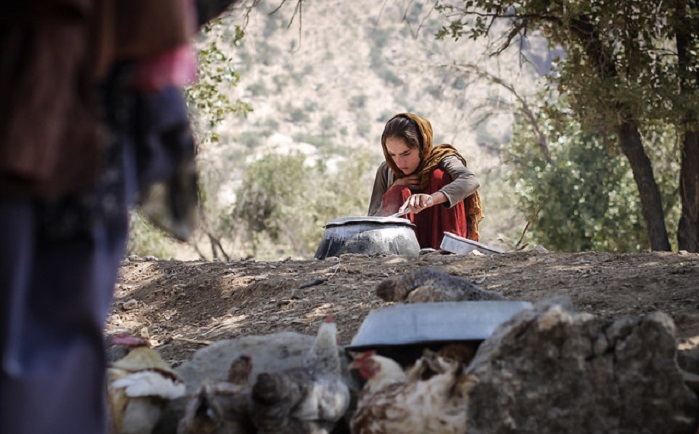
Nomads of Iran – The Shahsavan
When Abbas I of Persia organized a single militia from different tribes, the Shahsavans were born! Now, these mainly Turkish-speaking Iran nomads roam the green northwestern provinces of Azerbaijan and Ardabil, between Mount Sabalan and Mughan Plain. Probably, the Shahsavans are the most culturally-untouched tribe of all Iranian nomadic tribes. This is mostly featured in how devotedly they stick to their traditional clothing. A Shahsavan’s clothes reflect his/her social status. Generally, women’s colorful clothing has 9 different pieces!
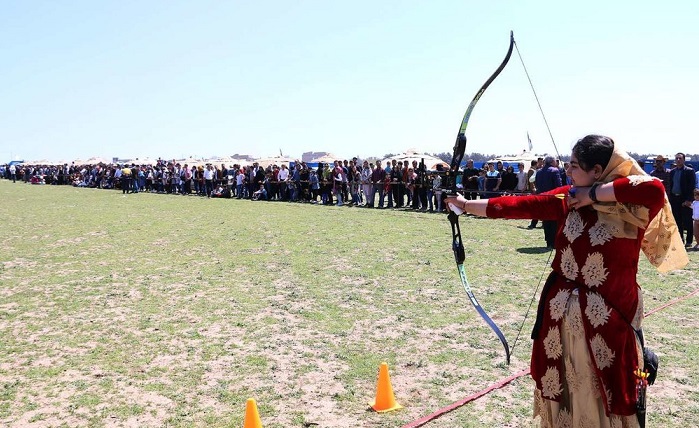
Nomads of Iran – Kurdish Nomads
The magnificent mountains of Kermanshah and Kurdistan provinces are home to different tribes of Kurdish nomads. These men of mountains have their roots in ancient Iran. Beautiful Kurdish dances, Kurdish songs, and adorable handicrafts are of the charms of their lovely culture. The Kurdish nomads of Iran also produce very famous animal oil. Payravan nomads who roam the northeast of Kermanshah are one of the must-see tribes of the Kurdish nomads of Iran.
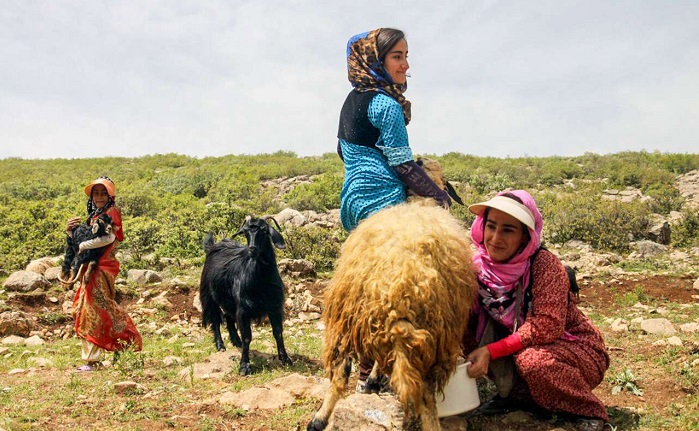
Iran Nomads – Baseri Nomads
The only nomads of Iran with Persian origin are Baseri Nomads. These Persian-speaking nomads have Fars Province as their home. Baseri Iran nomads are famous for their kilims, carpets (with a dominant orange color), and traditional music.
When, Where, and How to See the Nomads of Iran
Since the nomads of Iran always travel for more gentle weather, all year round is suitable for visiting them. So you can trace and find them depending on the tribe you are interested in and the climate you prefer. Yet, the nomads don’t live in a fixed place and their migration routes are not easy to find. Plus, you might even have to leave your car and find them on foot. What makes it most difficult is that they don’t speak English. So, I suggest joining a tour or finding a reliable guide.
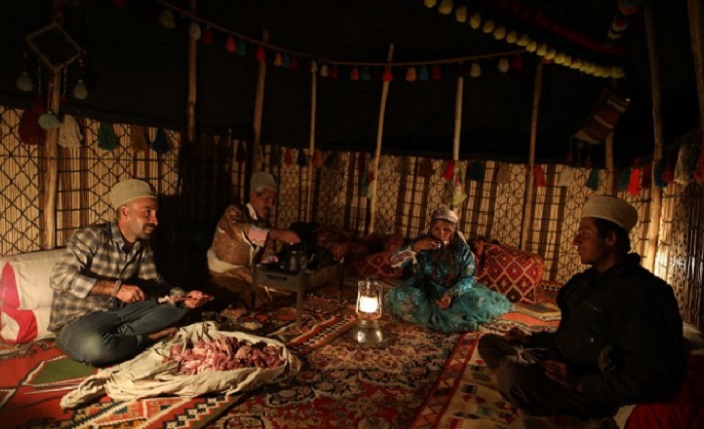
The Iranian Nomads are Gradually Fading Away
Deep-rooted traditions and the isolation that comes from a migratory lifestyle have helped the nomads of Iran survive to this day. But their number has diminished so much in the past century. The hardships that their lifestyle brings, the struggle with drought, and the lures of modern life to the younger generations are some of the reasons why. These days, you can trace the effects of modern life on the previously intact lifestyle of Iranian nomads. Now, they mostly travel with mini trucks, carry cell phones, and have items of modern clothing. There are around one and a half million nomads around Iran. Unfortunately, the remaining nomads might be the final chapter in the history of Iranian nomads.
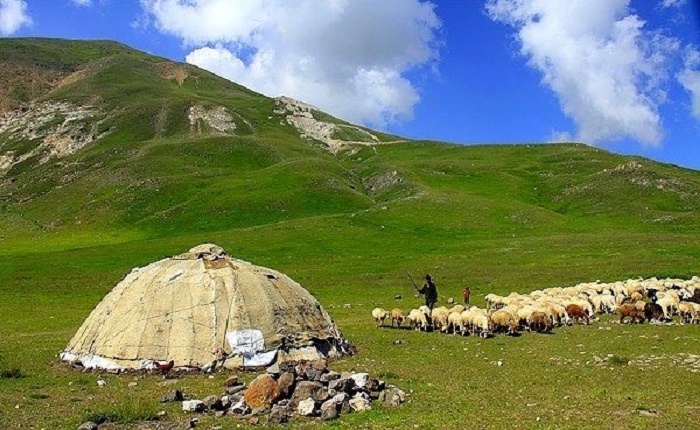
Key Words:
Iranian Nomads, Persian Nomads, nomadic life in Iran, Iranian Tribes, nomadic tribes of Iran, Nomads Iran, Iran nomad

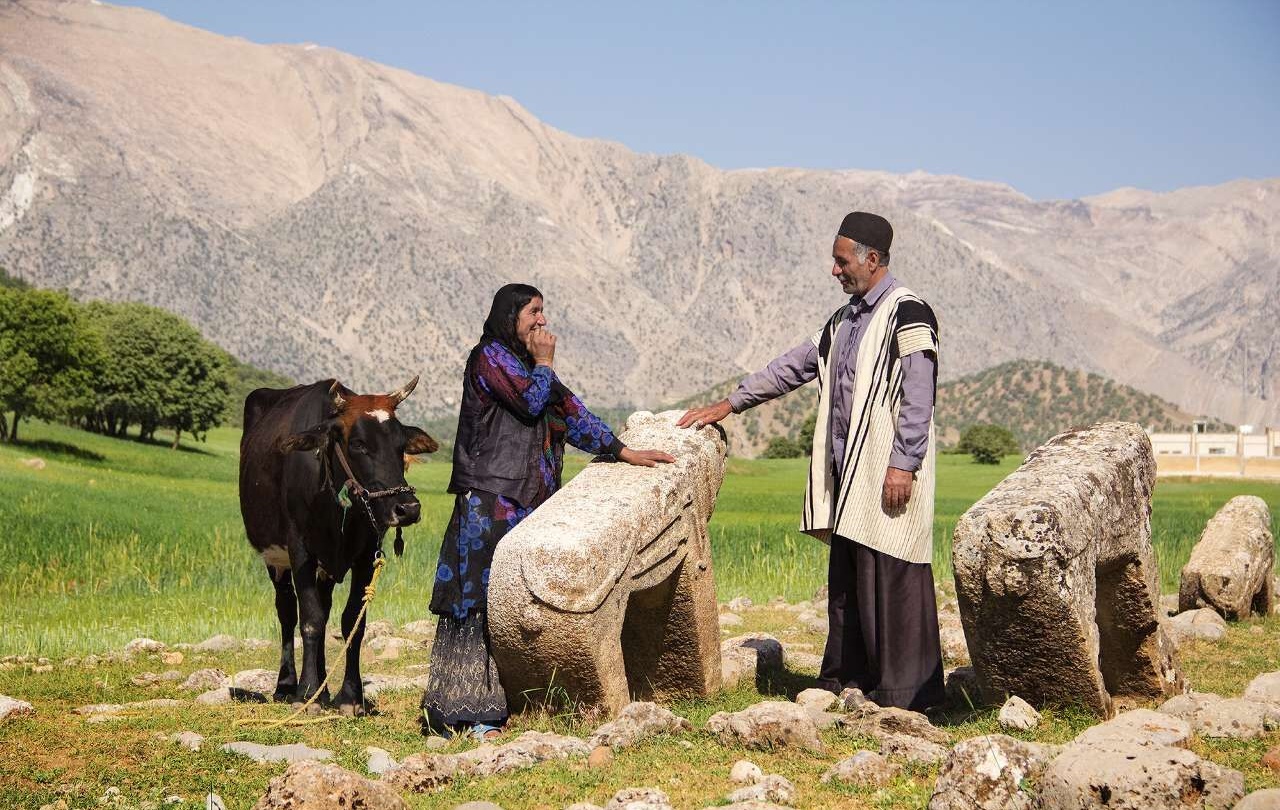
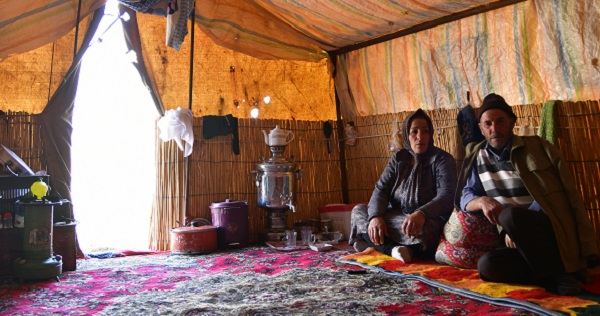
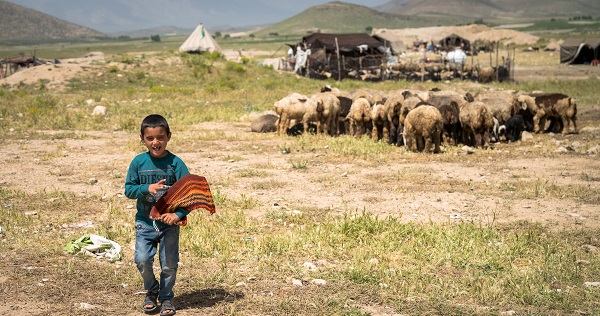
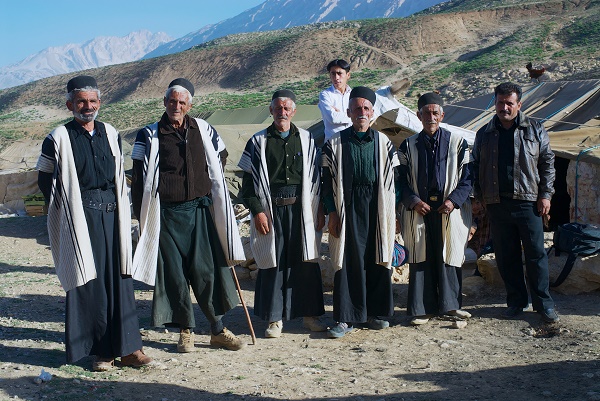
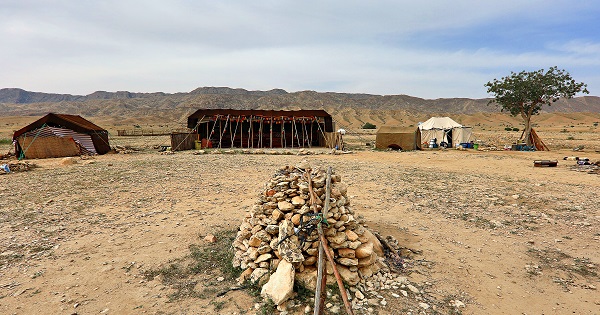

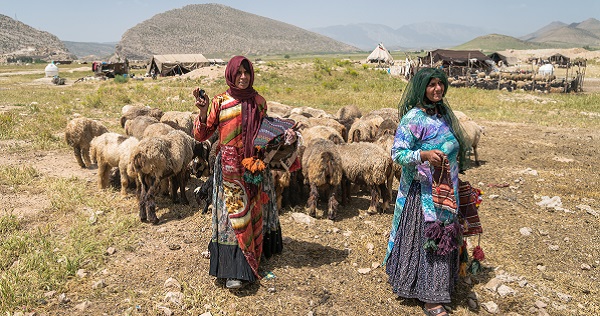
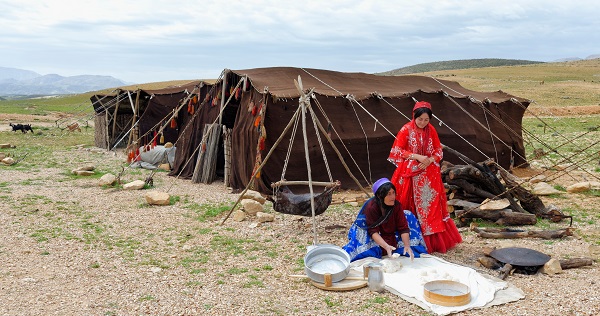
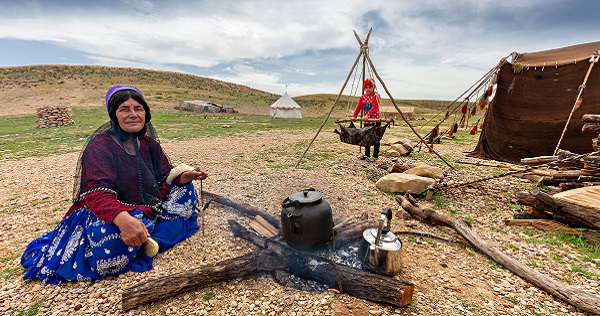
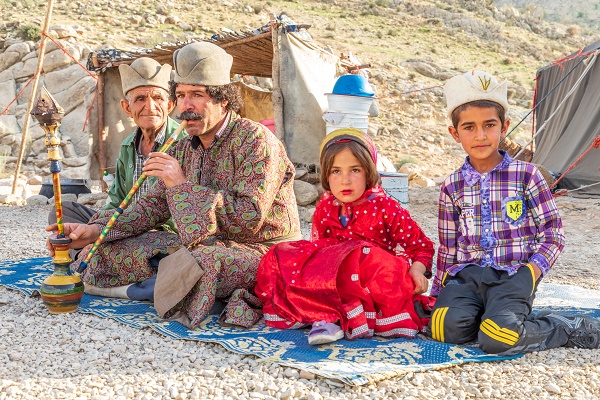

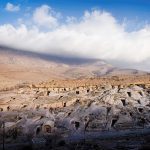
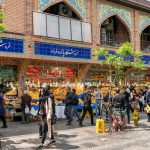

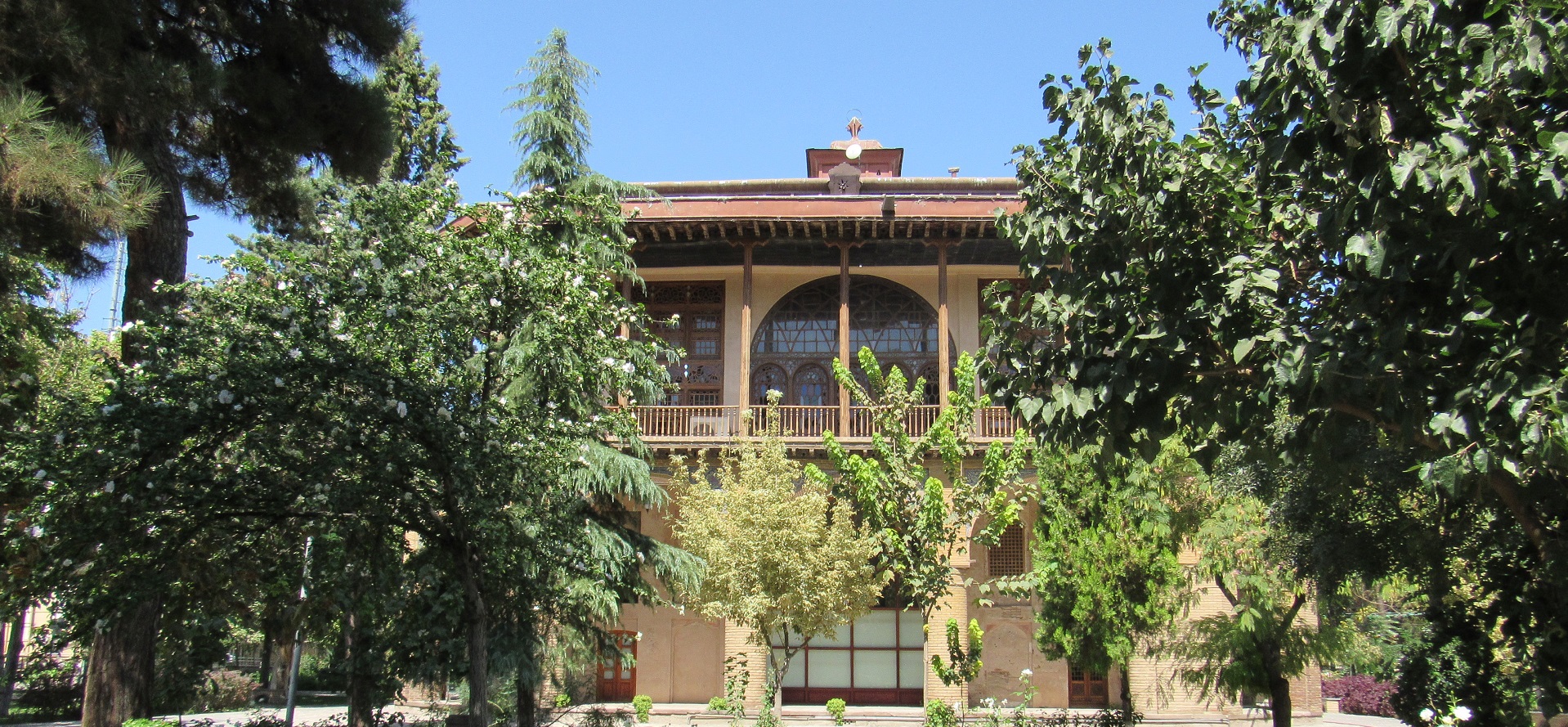
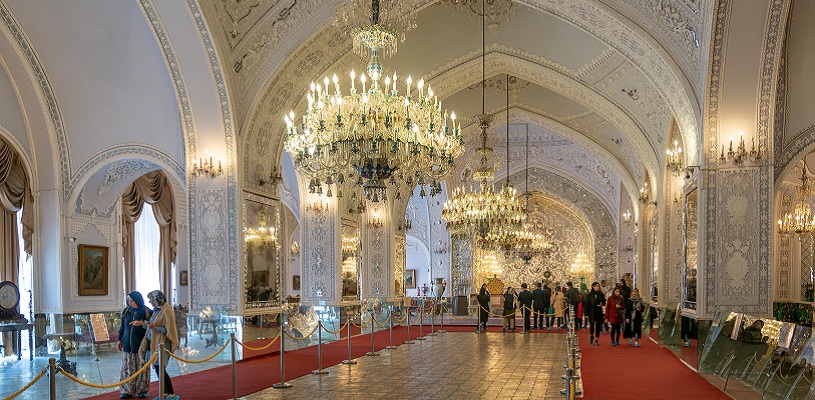
great blog